
Grant Writing is just Good ‘ol Project Management
The Giant Squid Group team writes a lot of grants, and we have a running joke: “Hey, what's it like to be a grant writer?”
Because good grant writing is about a lot more than just writing grant narratives!
A lot of grant writing is about following directions a.k.a the rules, especially when you’re first starting. Do you remember in high school - or whatever your place of residence’s equivalent is of high school - when your teacher would remind you to write your name on a test because it was an easy 10 points? This is the energy you must cultivate to be a successful grant writer.
That said, I promise there will come a time after intentional cultivation with a funder when you can rock the boat and challenge their processes.
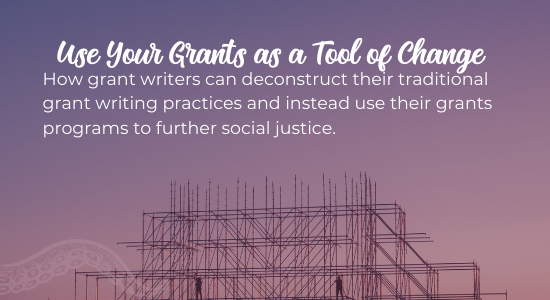
Use Your Grants as a Tool of Change
When I put on my “grant writer hat” and dive into the song-and-dance of grant deadlines, character counts, and funder priorities, sometimes it feels like I’m doing nothing but reinventing the wheel.
I’ve been writing grants for a long time. I’ve been fundraising even longer. And some days it feels like I have one foot in the vital work of the Community-Centric Fundraising movement, and one foot stuck in the mud of grant deadlines. But, grant writers play a critical role in branding an organization, and crafting the ways in which it’s presented to funders. And so grant writers play a critical role in integrating social justice into fundraising programs —and the overall culture and work of our organizations.
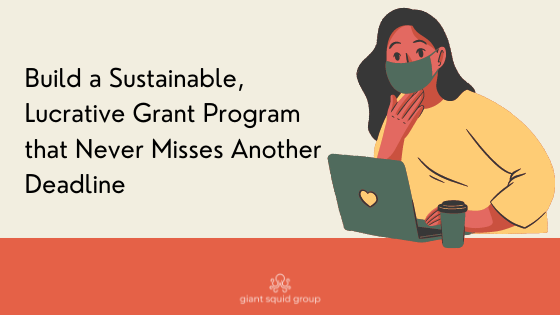
Build a Sustainable, Lucrative Grant Program that Never Misses Another Deadline
Congratulations on winning a grant! Your nonprofit has worked tirelessly to get this far - but there's still more work to be done! Do you know what you need to do once you actually receive that grant? For starters, you need to make sure that you review the grant contract thoroughly, update your database with all of the details, and celebrate with your team. Let's take a closer look at each step.
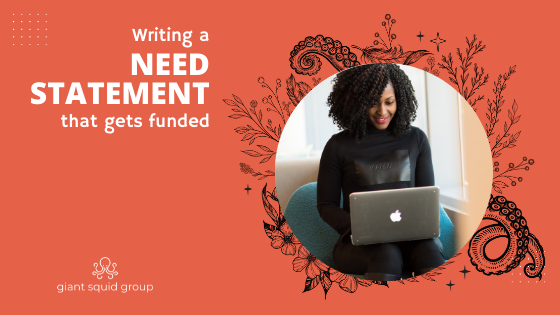
How to Write a Grant Proposal Need Statement That Gets Funded
Your grant proposal’s statement of need (also known as a need statement, need assessment, or problem statement) is the heart of your grant proposal. It answers the question “why care” about the work you are doing, and the impact it has on your community. It doesn’t get any more important than that!
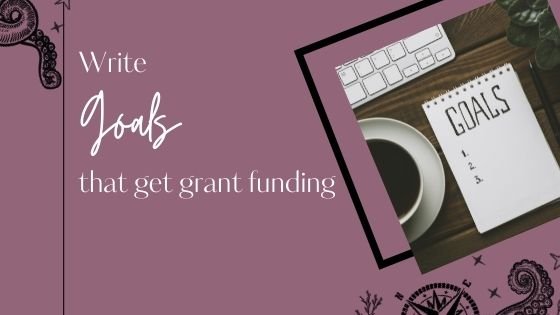
The Secret to Writing Goals and Objectives that Captivate Donors and Win Grants
If you are struggling to get grant funding, there’s a good chance the goals and objectives you include in your grant proposal are the reason.
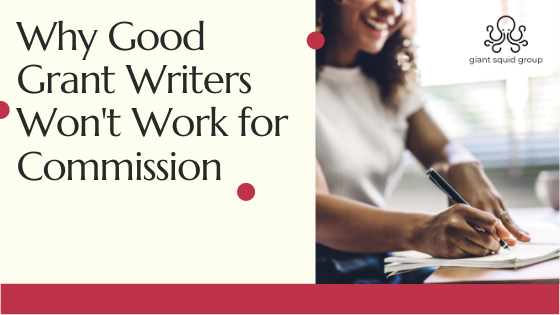
Why Good Grant Writers Won’t Work for Commission
You’re looking for ways to raise money for your new nonprofit, and want to hire a pro to help you win grants. Your budget is tight now, but if you’re awarded the grant, you’ll have tens of thousands of dollars. So, why not pay your grant writer a percentage of the grant you receive, since it’s the grant writer’s job to get you that money anyways, right?
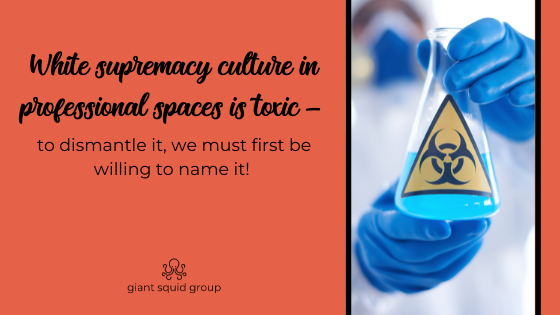
White supremacy culture in professional spaces is toxic — to dismantle it, we must first be willing to name it!
This essay was originally published on Community-Centric Fundraising’s website.
——
Throughout my career, I’ve worked many, many jobs in a variety of sectors. Any talent that I had and could make money off of, I, for lack of a better term, milked it. Most of those jobs didn’t materialize into a full-blown career until my first full-time development position. My first development position was also, truly the first time I faced white supremacy culture head-on. But before I dive into that, I must first explain how I got this job in the first place.
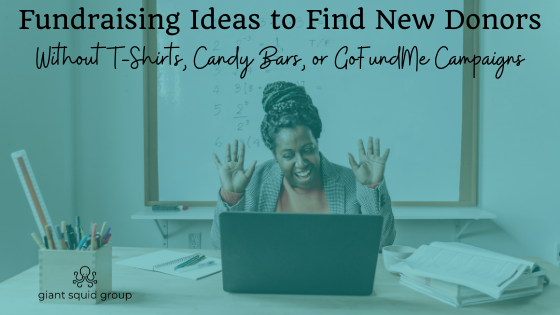
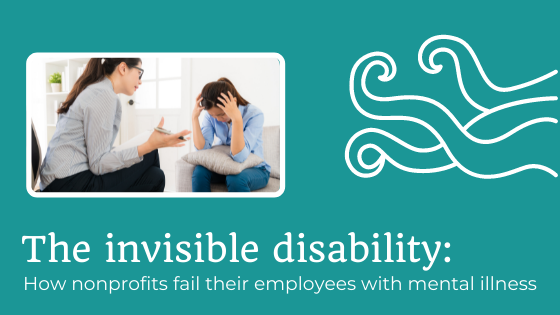
The invisible disability: How nonprofits fail their employees with mental illness
This essay was originally published on Community-Centric Fundraising’s website.
——
So, I have a mental illness. Like any disability, there is shame and stigma associated with mental illness, and because mental illness is something most individuals generally can’t see, it also comes with much denial.
My experience with mental illness is often challenged and gaslighted by family members and friends — but, I never expected that it would play such a role in my professional career. I want to share some of what I’ve experienced while navigating mental illness in professional spaces and hope to challenge managers and leaders to be better when managing individuals that don’t fit a neurotypical mold.
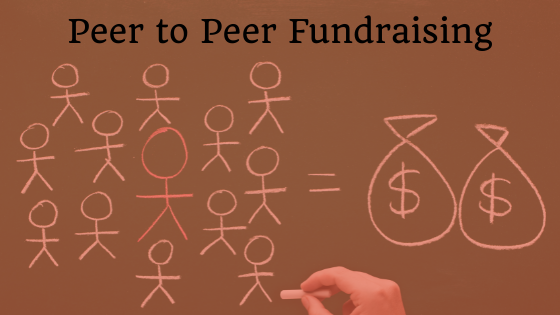
How to Make the Most of Crowdfunding: Birthday Fundraisers, 5K’s, Facebook Fundraisers, and More
You’ve probably participated in, or even run, a peer to peer (P2P) fundraising campaign. P2P campaigns have grown in popularity over the last decade since anyone can launch one and fundraise for themselves or an organization they care deeply about! Whether your fundraiser is a 5K run, a day of giving like Giving Tuesday, or another event, you can use your P2P campaign to mobilize your board and volunteers and raise money from a large audience.
While these campaigns have great potential, there are a few considerations to determine if a P2P Fundraising Campaign is the right strategy for your organization.

How to Write a Great Nonprofit Newsletter
Newsletters are a great way to keep donors, volunteers, and other stakeholders engaged and informed about the work your organization is doing. When done well, they can be a tool to deepen your relationships and invite readers into greater involvement.
However, given that the average person only opens about 18% of their emails, you want to make sure the message you’re sending is accessible, engaging, and gives a clear sense of the next step the reader should take. Here are our tips on what can take your newsletter from good to GREAT!
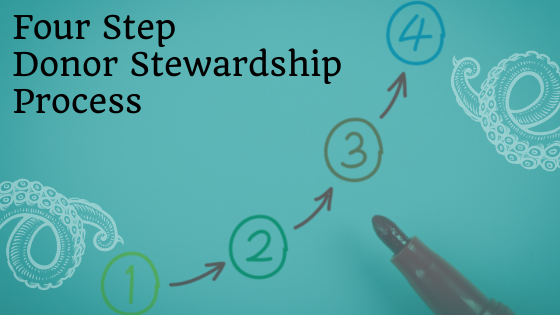
Four Step Donor Stewardship Process
Most nonprofits are laser-focused on getting donors. But what about keeping them?
While it can be tempting to assume that once a donor gives, she’ll continue to make a donation year after year, data says otherwise. According to the AFP 2018 Fundraising Effectiveness Survey, the 2017 donor retention rate was only 45.5%. That means that, overall, one out of every two donors won’t make a second gift.
The best thing you can do to keep your donors is to have a stewardship plan in place, and that starts with a great thank you letter. If you’re ready to start stewarding your donors with enthusiasm and sophistication, here are four ways you can create a simple yet powerful donor stewardship plan.
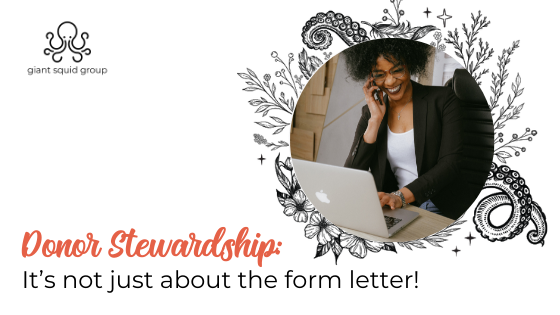
Donor Stewardship: It’s not just about the form letter!
Donor stewardship is a critical aspect to any fundraising operation. If we had a nickel for how many ED’s have told us they don’t like making thank you calls, we’d be on an island getaway right now! A thank you call- sweet and simple. A handwritten thank you card- folk’s love seeing pen on paper. A special gift with your logo- marketing with a thank you!
Stewardship does not have to be complicated. But it has to be. It must be done for you to succeed.

Writing Your Grant Boilerplate
So, you’re a grant writer and are submitting several applications a month. You find yourself needing to streamline your process to meet deadlines and win more money! My friend, it's time you consider adding a boilerplate to your toolbox - assuming you don’t already have one.

Donors are People Too: Bringing Your Work to Life When You Write Grants
Sometimes, communicating with donors is scary. There’s a perceived power dynamic between the money-holder and the money-asker that drives the stories we tell. What would the donor want to hear? How do I tell our story in 750 characters? Does this story make us seem less than perfect?
Here’s the thing -- donors are people too. Sure, foundations aren’t, but program officers, heads of foundations, and trustees are. They’re interested in supporting YOUR work and not another organization with a wildly different focus area because they’re interested in your cause and what you’re doing to drive it forward.

The Top Five Grant Writing Techniques of Successful Fundraisers
If you are growing a grants program, it can be tempting to just submit as many grant proposals as possible. But, when it comes to winning grant funding the most important thing isn’t how much you write. Instead, it’s finding grants that really align with your work.

The Nonprofit Band-Aid Syndrome
What do you do when you see a problem in your neighborhood, whether it’s a stray cat, an individual experiencing homelessness, or a school library without books?
If your answer is “start a nonprofit!” you might want to pause and think again. Starting a nonprofit isn’t always the best way to have an impact on your community — and it might even make the problem worse.
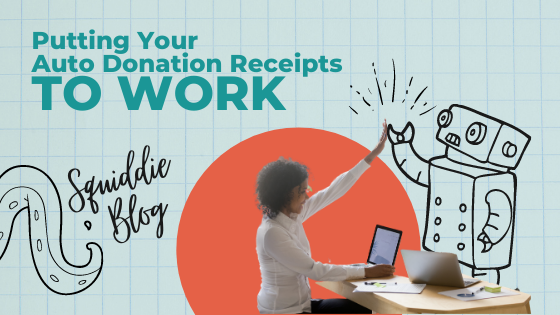
Put Your Automatic Donation Receipts to Work
Someone made a gift to your organization. Hurrah! They’ve shown they care about your work, and want to support you. And, you have their money so your work is done, right? Wrong. As soon as a donor hits “submit gift,” your work as a fundraiser starts. While I’m a big fan of great (and timely!) thank you letters, hand-written notes, and phone calls, your stewardship can —and should —start with your automated email receipts.

AmazonSmile is Not a Fundraising Campaign
If you use Amazon.com or support any local nonprofits, you know the call to action: use AmazonSmile when you shop online and a portion of your proceeds are automatically donated to the nonprofit of your choice. Easy, right?

Let’s Rock our End-of-Year Giving with a Five-Day Challenge!
Welcome to the End-of-Year Giving 5 Day Challenge! It’s that time of year when Giving Tuesday and End-of-Year campaigns loom over us all! So this year, we want to have some fun and create a kick-ass end-of-year campaign. In a week.
